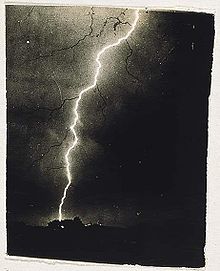
 In “Aren’t You Dead Yet?”, one of the stories in Elissa Schappell’s new collection, Blueprints for Building Better Girls, the narrator, an aspiring writer, receives a black, leather-bound journal as a gift from her best friend. Although she loves the look of the journal, she never writes in it. When her friend discovers this, he’s angry, and even accuses her of slacking off:
In “Aren’t You Dead Yet?”, one of the stories in Elissa Schappell’s new collection, Blueprints for Building Better Girls, the narrator, an aspiring writer, receives a black, leather-bound journal as a gift from her best friend. Although she loves the look of the journal, she never writes in it. When her friend discovers this, he’s angry, and even accuses her of slacking off:
I tried to explain that I hadn’t written in it because I loved it so much and I didn’t want to ruin it. The pages were so nice, and sewn in, you couldn’t just rip them out. Whatever stupid thing I wrote down would be in there permanently.
This passage reminded me of the many beautiful blank journals I’ve received over the years, journals I’ve never used. Whenever I fill up one of my trusty spiral notebooks, I go through the stack and tell myself I’m finally going to start using them. But then I think of sullying those pristine, unlined pages with my half-formed thoughts, and I feel as guilty as the narrator in Schappell’s story.
Unfortunately, the same guilt intrudes on many of the other lovely writerly gifts I’ve received. At the risk of sounding ungrateful, I confess that I have a lot of nice pens I never use, because I’m afraid of chewing on them; a lot of classic novels I haven’t read because I feel guilty about not having read them; and a lot of inspirational writer’s guides I never read, because what if I’m not inspired?
None of these gifts are offensive, and no one will begrudge you for giving them. But they are boilerplate gifts. Writers get blank journals for the same reasons that teachers get mugs, assistants get flowers, and grandmothers get tea. If you want to give the writer in your life something he or she will truly adore, here are twelve ideas:
1. A Cheesy New Bestseller

 One of the best presents I ever got was The Nanny Diaries. I really wanted it, but there were over 300 people on the library’s waiting list (I live in New York), and I wasn’t going to shell out $25 for something I was unlikely to read twice. The funny thing is, I never told my roommate that I wanted to read The Nanny Diaries. She just guessed that I had a secret craving for it. Of course, it can be as hard to gauge your friend’s taste in pop culture as it in high culture, but it’s better to guess wrong in the pop culture arena, because your friend is more likely to exchange it for something she likes better. Whereas, if you give her Gravity’s Rainbow, she’ll keep it for years out of obligation.
One of the best presents I ever got was The Nanny Diaries. I really wanted it, but there were over 300 people on the library’s waiting list (I live in New York), and I wasn’t going to shell out $25 for something I was unlikely to read twice. The funny thing is, I never told my roommate that I wanted to read The Nanny Diaries. She just guessed that I had a secret craving for it. Of course, it can be as hard to gauge your friend’s taste in pop culture as it in high culture, but it’s better to guess wrong in the pop culture arena, because your friend is more likely to exchange it for something she likes better. Whereas, if you give her Gravity’s Rainbow, she’ll keep it for years out of obligation.
2. Good lipstick
Writers are often broke. If they have $30 to spare, they are going to spend it on dinner, booze, or new books. Not lipstick. But writers are pale from spending so much time inside and could use some color. Make-up can be a tricky gift because it suggests that you think your friend’s face could use improvement. That’s why it’s important to go to a department store make-up counter and buy something frivolous and indulgent, like a single tube of red lipstick or some face powder or blush in a nice-looking case.
3. Foreign language learning software
Most writers wish they knew more languages. It can also be relaxing to be rendered inarticulate in a new language, in that it offers a real break from personal expression, nuance, and irony. At the same time, learning a new language sharpens your native tongue, and expands your vocabulary. It’s sort of like cross training. Although language classes with live instructors are generally more effective than computer programs, I prefer software because it allows me to take the class on my own time and at my own pace.
4. A Bathrobe
John Cheever famously donned a suit every morning in order to write. But as Ann Beattie recently revealed, and as a generation of bloggers already knows, most writers wear awful clothing while they are working. Help your writer friend out by giving her a beautiful robe to cover up her bizarre ensembles. Even if she already has one, she probably hasn’t washed it in a long time, and could use another.
5. A Manicure
I bite my nails, especially when I’m writing. I’ve noticed that a lot of other writers have suspiciously short nails, too. Manicures help. Also, manicures get writers out of the house—and off the internet.
6. “Freedom”, the internet-blocking software
“Freedom” is a computer program that blocks the internet on your computer for up to eight hours. I don’t understand why it’s effective, since it’s relatively easy to circumvent, but as soon as I turn it on, I stay off the internet for hours at a time. (There is also a program called “Anti-social”, which only blocks the social parts of the internet, like Facebook and Twitter.)
7. Booze, coffee, and other stimulants
Find out what your friend likes to drink and buy a really nice version of that thing. Wine can be tricky, but we are living in an age of over-educated clerks, so don’t be afraid to ask for help. If your friend is a coffee or tea drinker, find out how he brews it and buy him really good beans or tealeaves. Even better, find out what cafe he frequents and see if they sell gift certificates.
8. Yoga Classes
Yoga does wonders for anxiety, depression, and aching backs, three common writerly afflictions. Most yoga classes also incorporate some kind of meditation practice, which is also very helpful.
9. A pet
In a recent Atlantic blog post containing advice from world’s most prolific writers, a character from one of Muriel Spark’s novels is quoted, describing why cats are good for writers: “If you want to concentrate deeply on some problem, and especially some piece of writing or paper-work, you should acquire a cat… The effect of a cat on your concentration is remarkable, very mysterious.” Another prolific writer, Jennifer Weiner, recommends dogs on her website, where she’s posted a list of tips for aspiring writers. Dogs, she explains, foster discipline, because they must be walked several times a day. Furthermore, Weiner notes, walking is as beneficial for the writer as it is for the dog: “While you’re walking, you’re thinking about plot, or characters, or that tricky bit of dialogue that’s had you stumped for days.”
Obviously, a pet should not be given casually, or even as a surprise, but it’s worth considering, especially if you hear of an already-trained dog or cat that needs a new home.
10. Freezable homemade foods: casseroles, soups, breads, and baked goods.
This is a potentially Mom-ish gift, but if your friend is on deadline, a new parent, or just far from home during the holidays, a home-cooked meal could be a lovely gesture. I emphasize freezable because it should be something that you make at home and leave with your friend to eat later. If you can’t cook, buy a pie.
11. A hand-written letter
I know how corny this sounds, but many writers, especially fiction writers, still get a fair amount of rejection notes via the U.S. mail. You can easily make your friend’s day by sending an old-fashioned, chatty letter or even just a holiday card.
12. The Gift, by Lewis Hyde
 The Gift examines the role of artists in market economies, taking the lives of two major American poets as case studies. It’s the perfect antidote to all the earnest, helpful guides that aim to teach writers how to be more publishable, saleable, and disciplined. Where most writing guides make writers feel they could succeed if only they were more productive and efficient, The Gift argues that productivity and efficiency are market-based terms that have little meaning in gift economies, which is where many creative writers exchange and share their work. Another way of putting it is to say that The Gift makes feel writers feel less crazy.
The Gift examines the role of artists in market economies, taking the lives of two major American poets as case studies. It’s the perfect antidote to all the earnest, helpful guides that aim to teach writers how to be more publishable, saleable, and disciplined. Where most writing guides make writers feel they could succeed if only they were more productive and efficient, The Gift argues that productivity and efficiency are market-based terms that have little meaning in gift economies, which is where many creative writers exchange and share their work. Another way of putting it is to say that The Gift makes feel writers feel less crazy.
 Several New England Horror Writer members have been appearing or are scheduled to appear on Sci-Fi Saturday Night.
Several New England Horror Writer members have been appearing or are scheduled to appear on Sci-Fi Saturday Night.












 There’s all kinds of advice across the web about when to use which app for each small thing that needs doing. But the advocates for using paper to complete certain tasks are not so loud (you can’t hear them typing, among other things). Yet a Forrester Research survey of business professionals found that
There’s all kinds of advice across the web about when to use which app for each small thing that needs doing. But the advocates for using paper to complete certain tasks are not so loud (you can’t hear them typing, among other things). Yet a Forrester Research survey of business professionals found that 